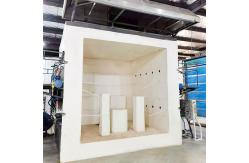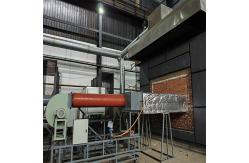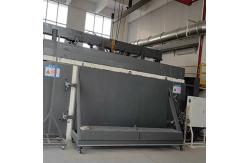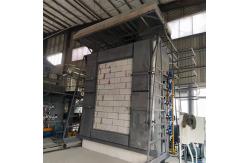Vertical Efficient Fire Resistance Test Furnace Integrated Furnace ISO 834-1 & ISO 3008
|
|
ISO834-1ISO 3008 Vertical Integrated Furnace For Fire Resistance Test Of Building Components
Production introduction:
The vertical furnace for fire resistance testing is a versatile and essential tool designed to evaluate the fire performance of a wide range of products and materials across various industries. It is widely used to assess the fire resistance of building components such as walls, doors, windows, and partitions, ensuring they meet safety requirements for structural integrity and insulation during a fire. In addition to construction materials, the furnace is also employed to test fire-rated ceilings, floors, and ventilation systems, which are critical for maintaining compartmentalization and preventing fire spread in buildings. Beyond construction, the vertical furnace plays a key role in the marine and offshore industries, where it is used to test fire-resistant materials for ships, oil rigs, and other offshore structures. These materials include fireproof bulkheads, doors, and insulation systems designed to withstand extreme temperatures and prevent catastrophic failures in hydrocarbon fire scenarios. In industrial settings, the furnace is utilized to evaluate the fire performance of firestop systems, cable trays, and ductwork, ensuring they can maintain their integrity and functionality during a fire. It is also applied in the automotive and aerospace sectors to test fire-resistant coatings, composites, and insulation materials used in vehicles and aircraft. The vertical furnace's ability to simulate various fire conditions, combined with its precise control of temperature and pressure, makes it an indispensable tool for research, development, and certification across multiple industries. Its applications ensure that products and materials meet stringent fire safety standards, ultimately enhancing safety and reducing risks in both everyday and high-risk environments.
Standard
1. International Standards (ISO)
1. ISO 834:This standard specifies the temperature variation over time in the furnace during the fire test, and is applicable to the fire resistance test of building components (such as walls, doors, windows, etc.) in the vertical direction. The test needs to simulate the fire environment, and evaluate the integrity, thermal insulation and other indicators through parameters such as temperature and pressure.)
2. ISO 3008/3009:It is specifically for fire resistance tests of components such as doors and roller shutters, and evaluates their fire resistance limit and integrity in vertical furnaces.
2. European Standards (EN)
1. EN 1363 Series
- EN 1363-1: General requirements for fire resistance tests, covering the test methods of vertical furnaces.
- EN 1364-1: Fire resistance test of non-load-bearing walls; EN 1365-1: Fire resistance test of load-bearing walls.
- EN 1366 Series: Fire resistance evaluation of special components such as ventilation ducts and fire dampers.
2. IMO hydrocarbon curve standard
3. British Standard (BS)
1. BS 476 Series
- BS 476-24: Fire resistance test method for ventilation ducts.
4. American Standard (ASTM/UL/NFPA)
1. ASTM E119:Evaluates the bearing capacity and thermal insulation of building components (such as walls and columns) under standard fire conditions, and is widely used in building fire protection certification.
2. UL standards - UL 263 (fire resistance test of building structures), UL 10 (fire resistance of door components), UL 1709 (fire resistance of steel structures), etc., covering different application scenarios of building components.
3. ASTM E814
5. Other standards
2. BS EN 16341:Fire resistance test standard for fire dampers.
Main performance characteristics:
1. One furnace can be used for multiple purposes and can be compatible with multiple standards.
2. Use high-precision acquisition cards to collect data on temperature, pressure, flow, etc. of each channel, and generate real-time reproduction of real information during combustion through microcomputer analysis, processing and control, and directly obtain results through microcomputer analysis and judgment. The whole machine uses high-quality components to ensure the high quality and high-speed operation of the system, which is advanced.
3. It adopts high-precision acquisition card + multi-channel module + PLC + computer to implement PID full-automatic control mode, with excellent stability, repeatability and reproducibility.
4. It adopts WINDOWS XP operation interface and LabView, a global precision equipment special development software, with a fresh, beautiful and simple interface style. During the test, the measurement results are displayed in real time and a perfect curve is dynamically drawn. The data can be permanently saved, retrieved and printed out, and the report can be printed directly. It has the characteristics of high intelligence, guided menu operation, simple and intuitive, making the test results more accurate.
5. The design life of the furnace is more than 20 years, and the furnace is built using American GOVMARK technology. Five-layer structure, when the inner layer temperature is 1300℃, the outer layer temperature is room temperature. Long service life, the inner layer insulation material (wearing parts) is easy to replace.
6. It has multiple safety protection systems including air duct thermal protection, pressure release protection, leakage protection, gas leakage detection, gas pipeline safety protection, burner safety protection, and other safety facilities, which comprehensively improves the safety factor.
7. The high-temperature hot air extracted from the furnace is water-cooled and air-cooled, and the water uses circulating water to improve the energy saving effect.
8. Our company has applied for the patent and software copyright of the furnace.
9.Furnace structure: The furnace is designed to last more than 15 years and is built using American GOVMARK technology. Five-layer structure, when the inner layer is 1300°C, the outer layer is at room temperature. Long service life, the inner layer insulation material (wearing parts) is easy to replace. The five-layer structure from outside to inside is as follows: The first layer is a steel structure frame. The second layer is made of red bricks. The third layer is refractory high-temperature asbestos. The fourth layer is refractory bricks. The fifth layer contains zirconium-containing refractory high-temperature wool, and the refractory temperature reaches 1600°C.
|
| Product Tags: Efficient fire resistance test furnace Vertical fire resistance test furnace ISO 3008 fire retardant tester |
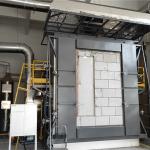
|
Vertical Efficient Fire Resistance Test Furnace Integrated Furnace ISO 834-1 & ISO 3008 |
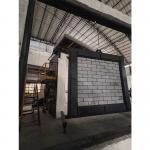
|
EN 1363-1 ISO 834 Vertical Fire Resistance Test Furnace For Building Components |
|
|
IEC 60112 Tracking Index Test Apparatus For Electronic Components With High Precision |
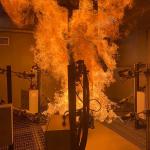
|
ISO 13506 ASTM F 1930 Protective Clothing Tester Burning Dummy Tester For Personal Protect Equipment |
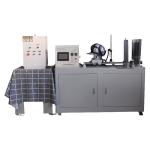
|
EN136 Full Face Mask Thermal Radiation Resistance Test Machine For Personal Protect Equipment |
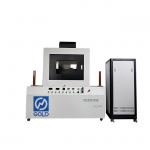
|
MT/T 386 Mining Cable Fire Resistance Tester Machine With High Precision |


